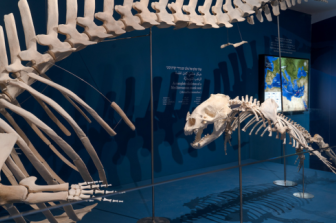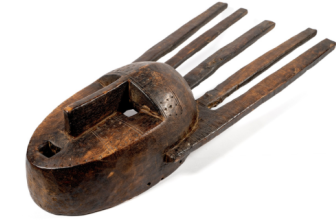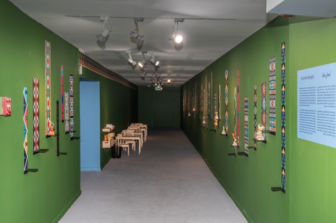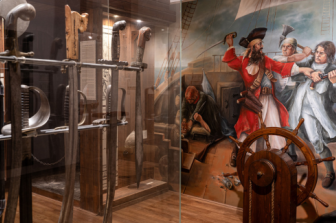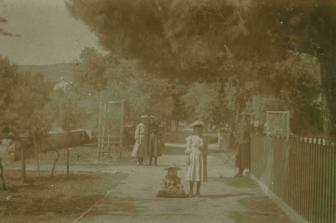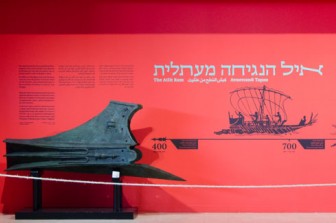Exhibitions
Mammals of the Deep | The Wonderful World of Marine Mammals in the Mediterranean and in the Gulf of Eilat
New exhibition
This exhibition is a product of this special bond between humans and nature. Specimens that indicate a highly diverse presence of marine mammals in our region have been brought to the museum for the very first time. Marine mammals of the Mediterranean and of the Gulf of Eilat, which is, in fact, an extension of the Indian Ocean, include various species of cetaceans (whales and dolphins) and one species of seal. The telltale findings that testify to their presence have been collected by a very special group of people, members of IMMRAC, who devote their time and energy to the task of studying the world of marine mammals and assisting in the protection of their habitat.
Africa Calling: The African Collection Revealed
Now at the museum
The Museum's collection of African ethnographic artifacts, which has remained hidden from public view for 30 years, includes approximately 1,000 pieces, donated by avid collectors and dedicated donors from around the world, who have intensely explored specific cultures and regions of Africa. These works were once exhibited at the Haifa Museum of Ethnology, founded in the early 1950s and active on Arlozorov Street until 1995. In unveiling these works again, "Africa Calling" calls on its viewers to immerse themselves in the diverse and vibrant cultures of Africa.
Desktop: A Physical Exhibition about a Digital Era
Now at the museum
For the exhibition, the Museum invited artists to create new works, exploring how digital thinking, concepts, and tools take on substance in the physical world, shaping artistic practice and material expression. Their works delve into what happens when digital aesthetics encounter physical limitations—people, matter, and unpredictability—and what it means when technology becomes an integral part of our bodies and identities.
Facial Topography: Israeli Art from the Museum's Collection
Now at the museum
The permanent exhibition showcases masterpieces from the Haifa Museum of Art's collection, which encompasses over 8,000 works, charting major trends in the history of local art. It spans works from the late 19th century to the present, where face and topography are mutually reflected, indicating affinities between the furrows of plowed earth and furrowed faces, between sun-scorched soil and tanned skin, between cracked asphalt and wounded flesh.
Give Me Strength | Gallery for Families
Many people living in Africa create power figures: hollow mannequins, which they fill with various materials, such as healing herbs or animal bones. In Africa, people believe that every material has energy that can have a positive influence on reality. So these power figures are charms providing protection against evil spirits, bad luck, and disease, and giving life-force to whoever holds them.
Pirates - Between truth and legend
The phenomenon of piracy - piracy - has evolved since man began trading in ships, and it has flourished mainly in areas of loose rule. Piracy existed in ancient times in the Mediterranean and the Sea of China and reached its peak in the seventeenth century in the Atlantic Ocean, with the rise of European colonialism and the development of trade routes with the "New World".
Fishermen and Fish | Fishing Culture in Artifacts from the Haifa Museums Collections
Now at the museum
This exhibition invites viewers to observe the environment of fishing villages, blending with the shore and the marine landscape, and to take a quick glance at the narrow streets of markets filled with fresh fish. It also introduces works depicting the world of fishermen peacefully engaged in their craft, as well as the dedication of fishermen anchored in shipyards or venturing out into the vast sea. Viewers are invited to explore different fishing experiences—whether calm, dynamic, or stormy—and to face the challenges posed by nature along with the fishermen. Other works focus on the diversity of types of fish. Finally, upon returning to the shore, one can encounter marine gatherers at work and fishermen focusing on the meticulous task of mending nets, allowing for an inward, meditative experience.
Community House | The Templers: Legacy and Dream
New exhibition
This exhibition is a showcase for artist Ossi Yalon, who has spent several years researching the long-gone community in the Land of the Bible. Her works focus on the stories of members of the community who played an important role in the history of Haifa, and left a rich and fascinating cultural impression on the city. Yalon’s art strives to revitalize the Templers’ way of life, and envisage their day-to-day routine, the cultural and social characteristics of their community, and the view they saw from their windows.
Can you see its beauty
New Exhibition
The exhibition presents an intergenerational dialogue, spanning a hundred years, between Hermann Struck and Gil Goren, emphasizing a common perspective, according to which the power of visual imagery is not merely aesthetic, but political, social and educational as well.
The Athlit Ram
One of the most important and rare discoveries of underwater archaeology in Israel is that of the Athlit ram. It was discovered by the late Yehoshua Ramon in 1980, in the northern bay of Athlit, and was retrieved from the sea by the staff and students of the Maritime Civilizations Department at the Centre for Marine Studies at Haifa University.

